Migratory flows in the Ocean: Why do marine animals migrate?
Animal migrations in marine environments have fascinated scientists and nature enthusiasts for centuries. These extraordinary journeys reveal astonishing behaviors and remarkable adaptations in different species. Let's return to the Microbiome expedition (2020-2022) to understand the importance of plankton migrations and their major role in the carbon export to the depths.
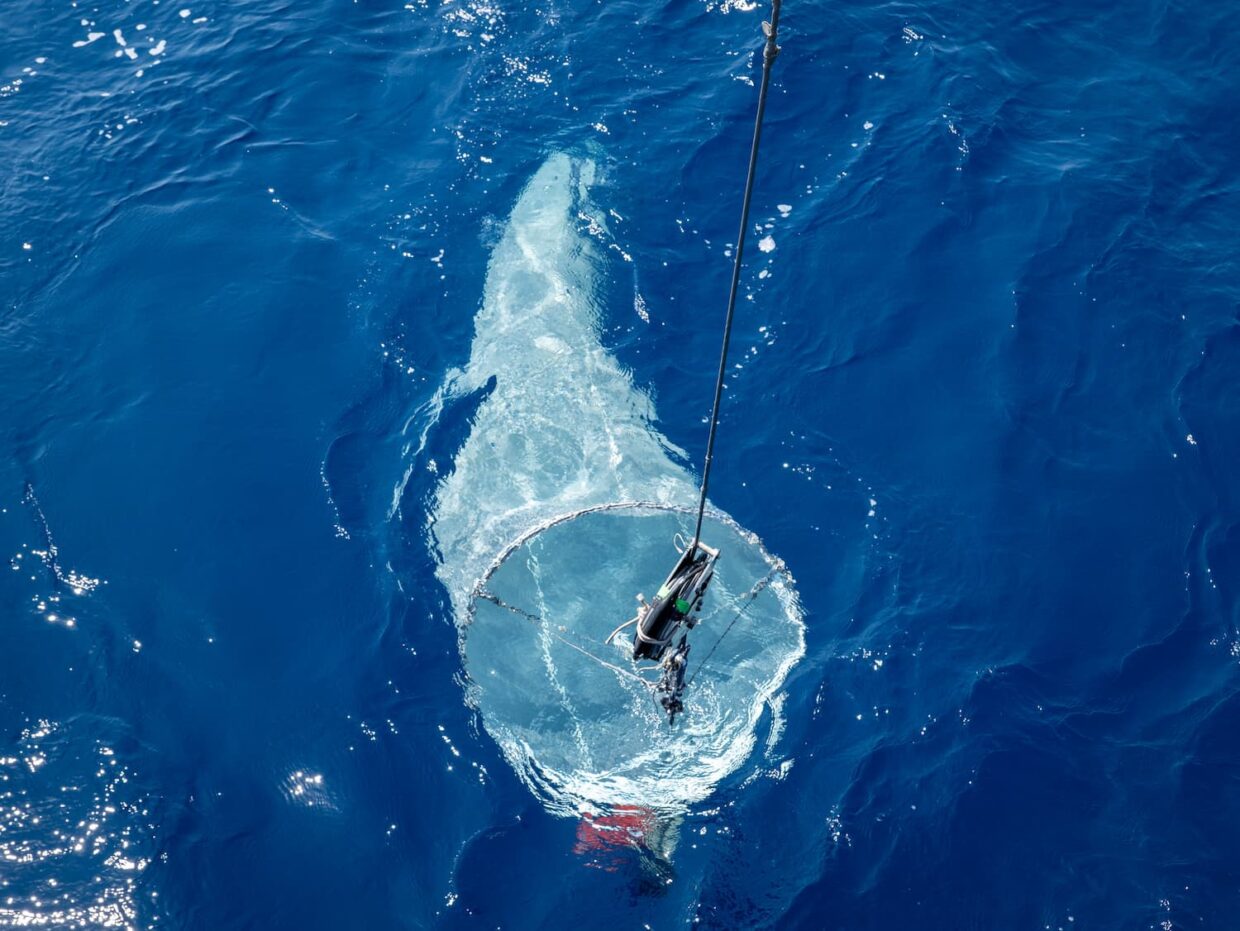
Animal behavior: migration
Movement is an animal behavioral characteristic that has been studied by scientists for many years. Animals are able to find their way in the Ocean, a dark and immense environment, thanks to external signals. Thus, a movement can be triggered by:
- the modification of the degree of activity by a stimulus (kinesis): the activity of an animal is influenced by the characteristics of the environment in which it finds itself. Certain species will see their activity intensify in a dry environment and slow down in a wet environment. This results in keeping the animal in a wet environment.
- the modification of movement which results in an organism moving away from or closer to a stimulus (taxis): let’s take the example of a trout which swims or automatically moves towards the upstream direction of the current. This behavior prevents her from being carried away.
Some animals travel back and forth between two regions every year. This movement is called “migration”. This is a relatively long seasonal movement.
How do marine organisms find their way in the Ocean?
Migratory animals have developed various abilities to find their way in the Ocean, a vast ecosystem where all the senses are engaged:
- piloting: natural landmarks such as ocean currents, underwater formations and water temperatures serve as landmarks for marine animals during their migrations. The animal then leaves from a familiar geographical landmark ‘A’ to another ‘B’. Piloting is effective over short distances but does not always work at night.
- orientation: the animal locates the cardinal points in relation to the sun or certain magnetic landmarks. The sun, for species that move during the day, and the stars, for species that move at night, represent stable reference points for orientation. To be able to use these frames of reference, certain animals have internal devices which compensate for the rotational movements of the Earth. Indeed, some of them use magneto-reception to find their way in space, that is to say they are capable of perceiving magnetic fields to orient themselves, follow a course and reach their destination. Sea turtles, for example, can use this ability to return to their nesting sites.
- navigation: the animal must define its current position in relation to reference positions while locating the cardinal points (orientation). We talk about “genetic memory”. For example, salmon are guided to the rivers where they were born to reproduce thanks to this memory.
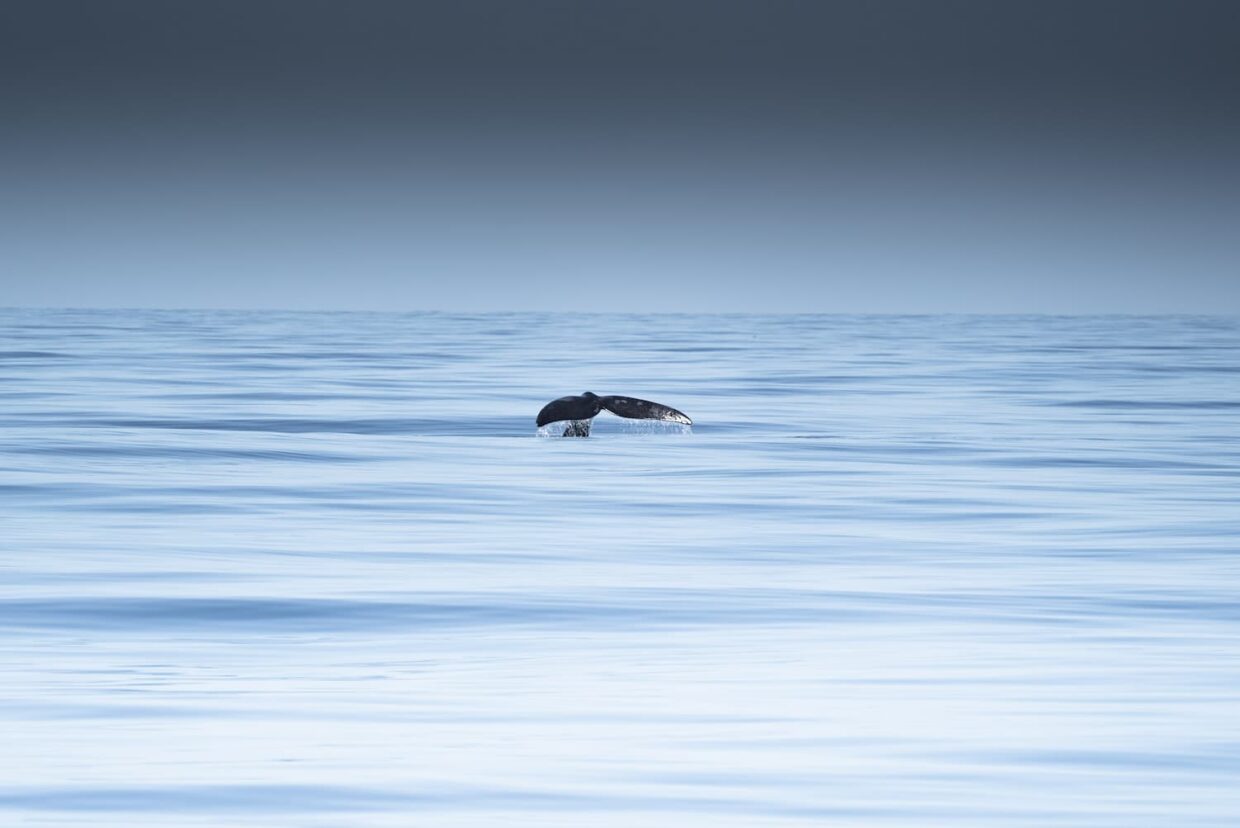
Why do animals migrate?
Migration is an animal behavior essential to the survival and reproduction of species. The main reasons for migration are:
- the search for food: one of the major drivers of migration. The Ocean is a vast and dynamic ecosystem that encourages many species to move long distances to find the best food “spot”.
- reproduction: specific reproduction sites attract many marine animals to ensure the survival of their offspring. These sites, often chosen for their ideal environmental conditions, can be separated from feeding areas, thus requiring regular migrations.
- environmental conditions: seasonal and climatic changes also influence animal behavior. Some of them move to avoid extreme conditions, such as cold waters in winter or areas of warm waters during summer.
What are the main species involved in these flows?
In reality, a great diversity of species migrate, from the largest to the smallest. Here are some examples.
- Whales
They are among the largest marine migrants. Some species, such as the gray whale, travel thousands of kilometers between their feeding grounds near Alaska and their breeding grounds in the more temperate waters of Mexico.
- Sea turtles
They travel incredible distances to reach their breeding and laying sites.
- Migratory fish
Fish species like salmon make complex migrations between fresh and salt water for reproduction.
- Seabirds
Seabirds, such as albatrosses, make transoceanic migrations in search of food.
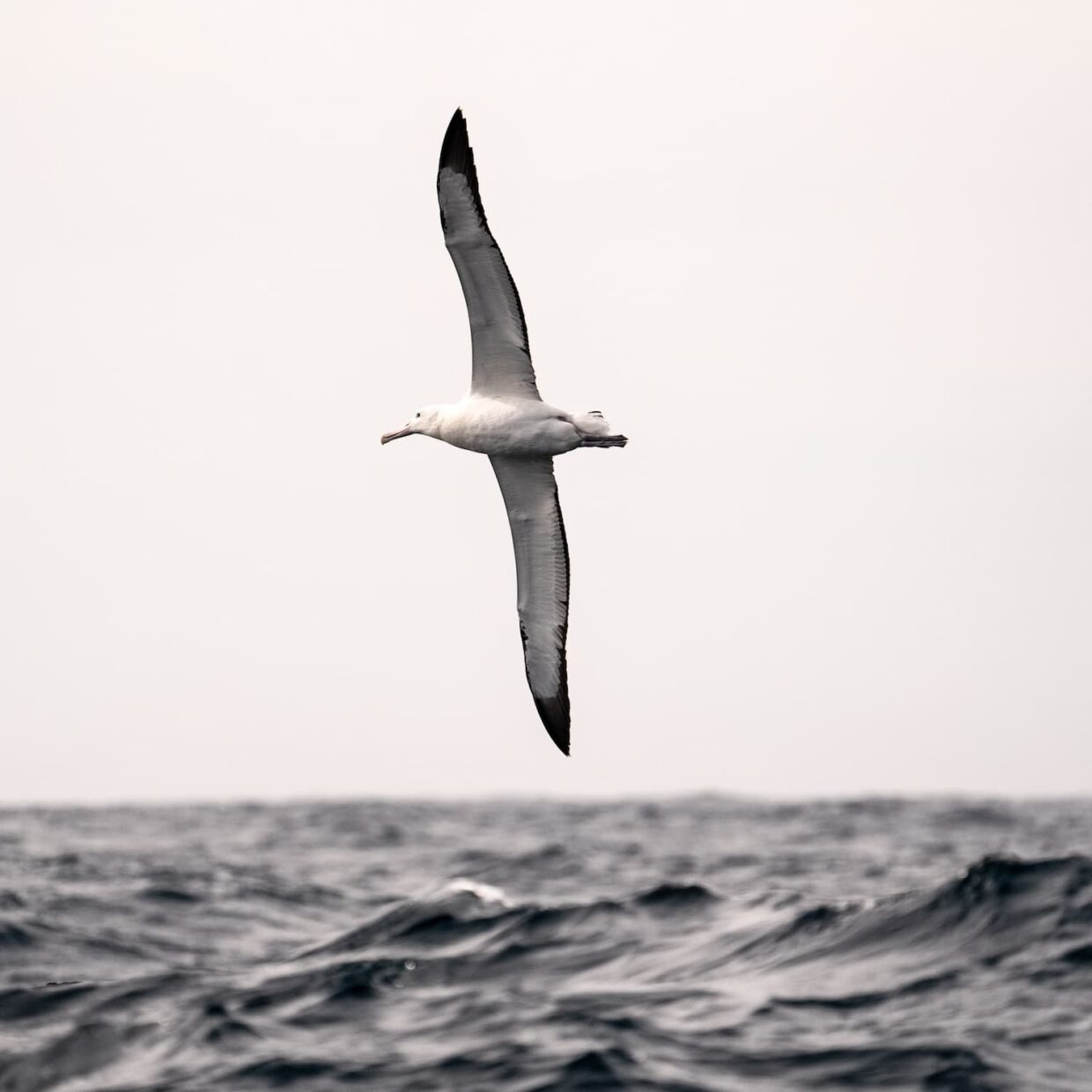
Do plankton migrate just like these emblematic species?
Planktonic migrations
Plankton, composed of macro- and microscopic organisms drifting with currents, play an essential role in marine ecosystems. Plankton “migrations” are often influenced by factors such as environmental conditions, seasonal cycles and ocean circulation patterns. Some plankton will also carry out diurnal migrations. They will migrate to the depths during the day to minimize their exposure to sunlight. This strategy reduces predation and the impact of UV rays.
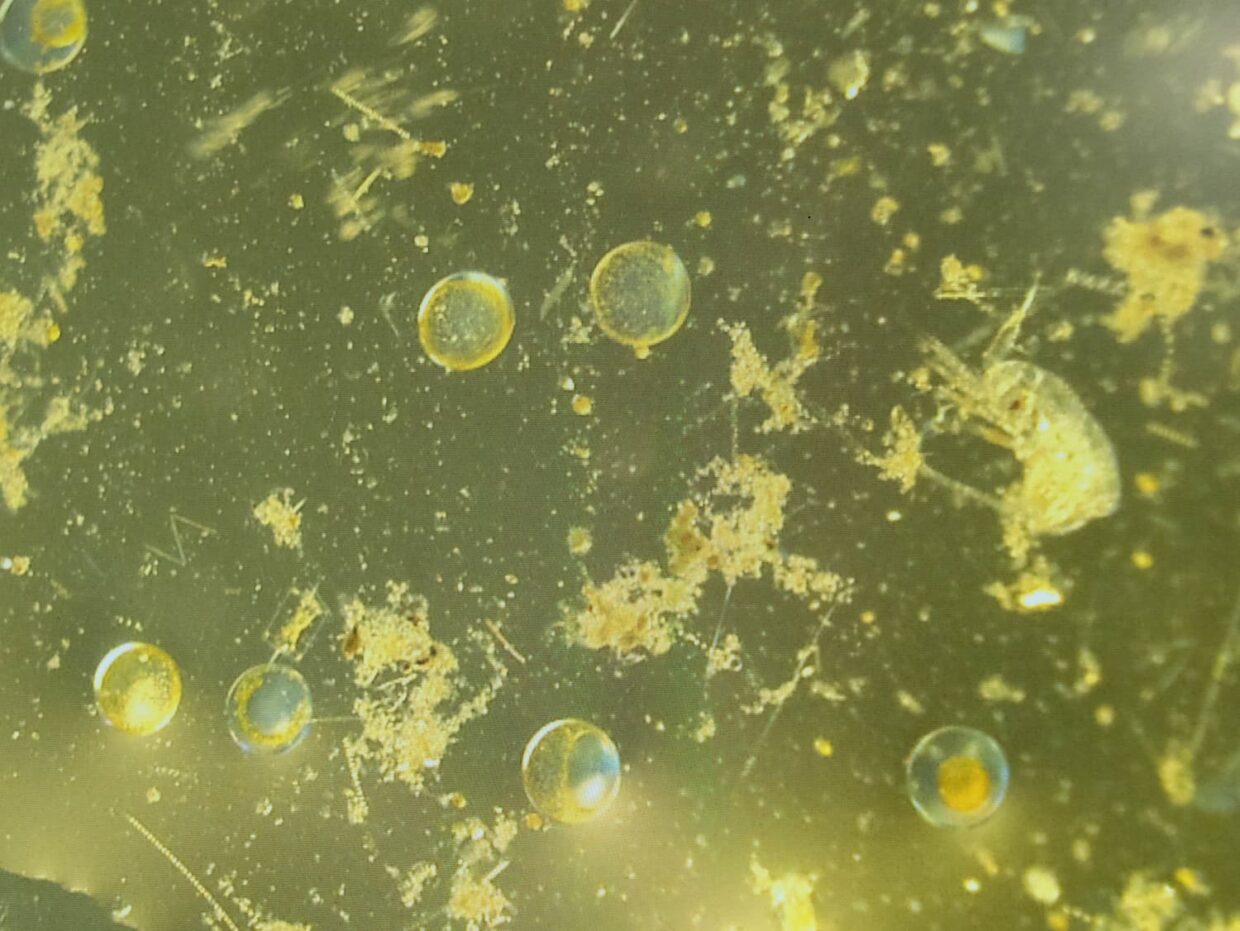
Zooplankton: diurnal and nocturnal vertical movements
Composed mainly of microscopic animal organisms, zooplankton participate in diurnal and nocturnal vertical migrations. The vast majority of them come to the surface at night to feed, taking advantage of the darkness to avoid predators. At sunrise, they descend into the depths to escape the light and daytime predators.
Phytoplankton: seasonal vertical movements
Phytoplankton, made up of photosynthetic microorganisms such as microalgae, follow seasonal vertical migrations in response to changes in sunlight. This allows them to maximize access to light for photosynthesis.
The vertical migration movements of plankton can therefore be influenced by seasonal changes such as:
- light: the availability of sunlight is a major factor influencing plankton migrations, particularly for phytoplankton which depends on photosynthesis.
- water temperature: changes in water temperature can influence zooplankton migrations, as certain species prefer specific conditions.
- ocean currents: currents can transport plankton over long distances, thus influencing the overall distribution.
Tara Microbiomes mission: nycthemeral migrations
During the Microbiome expedition (2020-2022), scientists aboard Tara studied the Vittoria Trinidad Mountains (4,000 m deep), off the coast of Brazil. Many planktonic species in this area migrate from the depths to the surface to feed. Although it is the largest animal migration in terms of displaced biomass known on Earth, it is also the least documented!
Since organisms act differently at night, scientists wanted to know more about these behaviors. For this reason, seawater samples were taken day and night aboard Tara in order to cover all the species present.
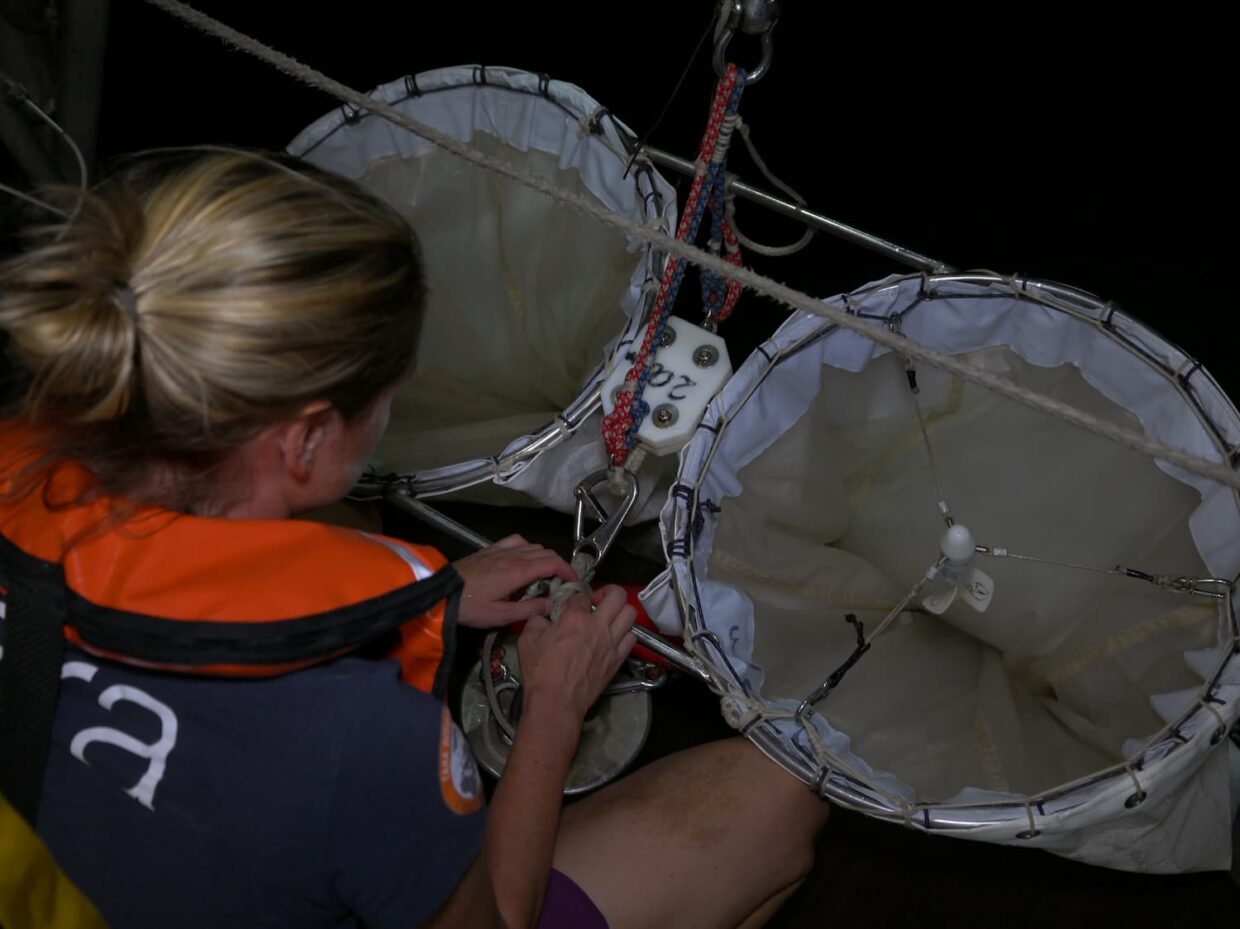
Phytoplankton live close to the surface of the Ocean to benefit from sunlight. Zooplankton live between 400 and 500 meters deep. However, every night, the zooplankton rise to the surface to feed on phytoplankton while being protected from predators. Thus, just like humans, microorganisms have a so-called “nightly” rhythm, that is, a day and a night. We therefore speak of nycthemeral migration.
This migration can be very rapid. If we relate, for example, the copepod’s migration rate (500 m in 2 hours) to its size (1 mm), we understand that this microorganism moves at the speed of a military fighter plane! This migration therefore has a certain impact on the ecosystem. Indeed, by consuming the surface phytoplankton, the zooplankton which descends to the depths in the early morning takes all this biomass with it. Scientists consider that this migration accounts for a third of the carbon export to the depths.
Plankton migrations are a crucial component of marine ecosystems, influencing food chains and biogeochemical cycles. Understanding these movements is essential to assess the impact of climate change on the Ocean and to ensure the continued proper functioning of the global ecosystem.

